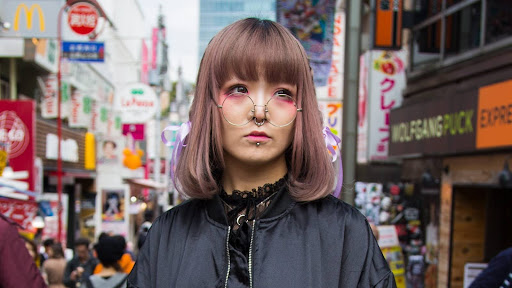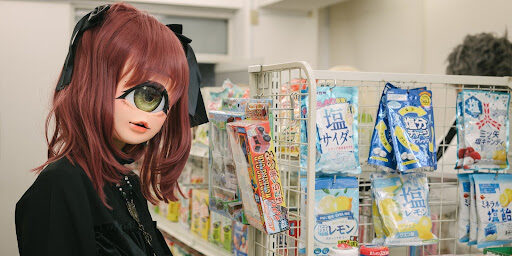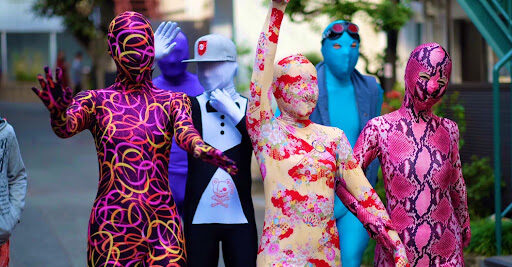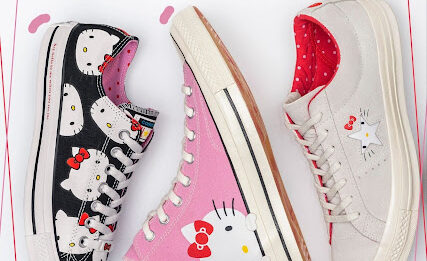We’ve been chronicling iconic Japanese subcultures for years. We revisit that journey and delve into why youth are drawn to these vibrant style aesthetics.
KAWAII: THE CULT OF CUTENESS
In the late 1960s, Japan birthed a phenomenon that would go on to captivate the world: “kawaii”, meaning ‘lovely’, ‘lovable’, ‘adorable’ — the cult of cute. Emerging from the streets of Harajuku, home to some of the world’s most iconic style subcultures, this adoration for frills, adorable characters, pastels, and bows was born. Not limited to fashion, kawaii culture has permeated every aspect of Japanese society: food, pop culture, merchandise, and brand mascots.
The West took note. Japanese culture, including ‘kawaii”, anime, manga, and cosplay, was enthusiastically embraced by foreign countries — catapulted into global consciousness thanks to social media. And soon, we saw youth champion the cult of cute on an international scale.
On an individual level, kawaii has united youth globally in their shared desire to rebel. Because, according to our interviews with the youth in Harajuku, kawaii signifies more than an attraction to lovable aesthetics or an obsession with youthfulness — it is a complex form of rebellion and social commentary on expectations of conformity, especially amongst young women. It’s defiance against societal norms cloaked in frills and bows.
Kawaii has emerged as a beacon of individuality. From Instagram to TikTok, kawaii fostered a global community of enthusiasts, with the hashtag #kawaii accumulating over 5M views on TikTok. This cultural phenomenon has become a lifestyle choice, from consuming cute edibles from Melbourne baker Vickie Liu (@vickiee_yo), to adorning bedrooms with handmade kawaii jewelry and accessories, available through numerous Etsy stores like Canadian @pixiekawaiishop.
LOLITAS: VICTORIAN ELEGANCE

The kawaii aesthetic has given rise to various fashion subcultures, from Fairy Kei to the babydoll-clad Lolitas — a hyper-feminine aesthetic that borrows its modest silhouettes from the Victorian era in Europe. Refinery29’s award-winning series, Style Out There, visited the Lolitas of Amsterdam and Summer Tales Boutique to find out why they chose petticoats over T-shirts and jeans. For local Amsterdam Lolitas, their clothing allows them to break from fashion conventions, express themselves, and carve out a space for their own creativity. And the widespread appeal of Lolita fashion has led to its fragmentation, catering to every taste imaginable: classic, sweet, gothic, pirate, and grotesque. There are also the Hijabi Lolitas that incorporate traditional Muslim hijab head coverings.
DECORA: WHERE MORE IS MORE

By the late 1990s, a new iconic subculture appeared on the streets of Harajuku: Decora, a more colorful, playful style that pushes accessories to the limit. Refinery29 traveled to Harajuku to explore the Decora fashion movement, interviewing figures like @kurebayashiii, one of the most famous decora girls, and @junnyan69, one of the few decora boys in the space. So, why are they drawn to maximalist colors, prints, and bows? Their answer: Decora is fashion that’s fearless. It uplifts, empowers, and breaks free from labels, and it serves as the ultimate act of rebellion against the prominent uniform culture in Japan.
YAMAI KAWAII: SICK CUTE

Yume goes dark in yamai kawaii (which translates to “sick cute”), a fashion that fuses the cute aesthetic with dark, ailing motifs to address the taboo topic of suicide and mental health in the country. Artists like Bisuko Ezaki pioneered this look, blending cute with antisocial words and imagery related to mental health. He is also the creator of Menhera-chan, a manga heroine who fights through wrist cutting. The dichotomy between the cute and the dark has empowered those experiencing mental health issues in Japan, serving as a form of therapy and a way to cope.
TANGEMAN: CYCLOP CHARACTERS

The cult of cuteness and the immense popularity of anime, manga, and cartoons birthed the concept of wearing onesies — and as a result, “Kigurumi,” a movement that reflects Japan’s obsession with onesies in which people dress as cute and funky looking characters. In 2023, VICE introduced tanganmen – a relatively new and more underground offshoot of the Kigurumi subculture, where people wear full body costumes and giant cyclops masks. As youth embrace multi-hyphenate identities and enjoy stepping in and out of characters, their Kigurumi identities feel like more than costumes, they offer opportunities to step into their real selves, to embody characters and embrace story narratives within their own lives.
ZENTAI: COMPLETE ANONYMITY

Zentai serves as the base for Kigurumi, offering skin-tight bodysuits for all kinds of events, whether art-related or for fetish’s sake. In Tokyo, Zentai has found an avid fanbase, allowing enthusiasts a sense of freedom and anonymity.
“Because when wearing a Zentai suit, it feels like I’m taking off the armor of the person I should be and letting myself be the real me with complete anonymity.” – Zentai performer Yukinko
BRANDS: BUY-IN TO CODES OF CUTENESS

It’s no surprise that marketers want to tap into the whimsy, childlike innocence and outright weirdness that captivates global youth. Hello Kitty is one example of this, spawning collaborations with Swarovski and Converse. European brands borrow from anime and cosplay – Burberry collaborated with “Blue Period” manga, and anime and design continue to take the fashion industry by storm. After all, from Harajuku’s streets to the avenues of Amsterdam, fashion can take inspiration from anywhere.
Download our latest report ‘Fashion Forecast’ as we unpack further how brands can connect with today’s vibrant style aesthetics and how youth are making new rules for fashion.


